Microgreens are packed with nutrition with 4 to 40 times more vitamin C, K, E, and beta carotene than the adult vegetable.
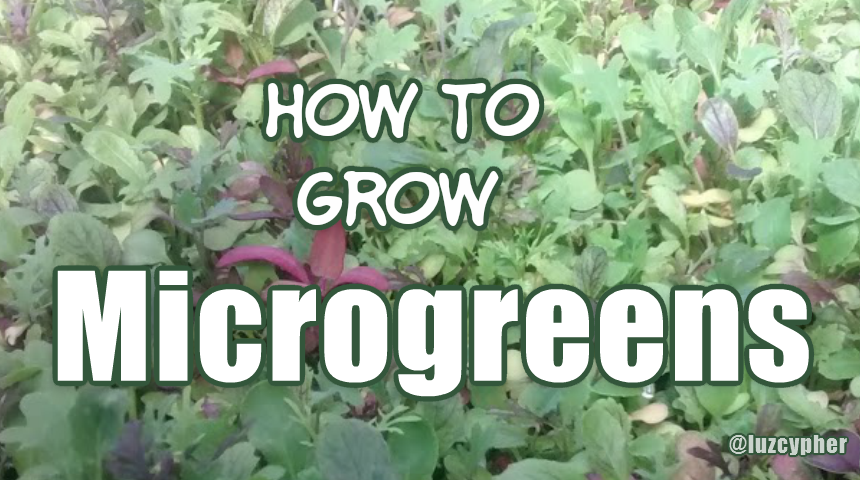
They're easy to grow and they're delicious. I'll show you how.
Microgreens are in the middle between sprouts or you're eating the sprouted seed root and all. The baby greens are harvested at about a month of age and are typically three to four inches tall.
A microgreen is a tiny vegetable green that is used both as a visual and flavor component or ingredient primarily in fine dining restaurants. Fine dining chefs use microgreens to enhance the beauty, taste and freshness of their dishes with their delicate textures and distinctive flavors. Smaller than “baby greens,” and harvested later than “sprouts,” microgreens can provide a variety of leaf flavors, such as sweet and spicy. They are also known for their various colors and textures. Among upscale markets, they are now considered a specialty genre of greens that are good for garnishing salads, soups, plates, and sandwiches credit
Microgreens are grown with media and are eaten when they're about two inches tall and have their first true leaves.
There's a wide variety of different plants that make delicious microgreens. Check out Johnny's Seeds to find a list of seeds that make great microgreens
To grow microgreens you'll need seeds and bulk seeds are a better buy than seed packs.
A seedling flat and seeding mat like this baby blanket or a soilless seed starting media like this sprouting mat and a sprayer.
There are two methods for planting microgreens. One is using a soilless potting mix and the other is using a baby blanket which is basically a grass mat.
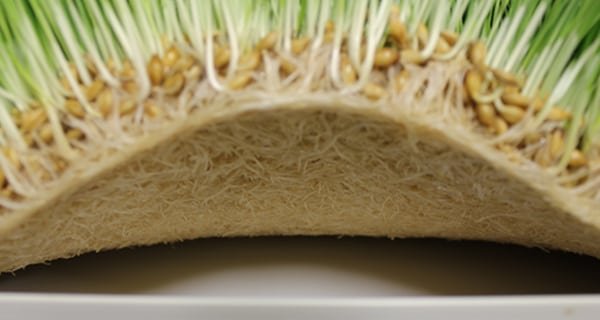
You can use any kind of tray that's wide and shallow. I'm using these seed starting trays but they must be sterilized. Be sure to clean and sterilize them as well as sterilizing your soil.
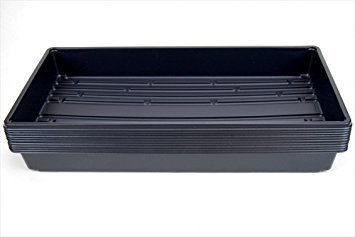
Using a seed mat is great for growing microgreens for market because you don't have to worry about getting any soil on the microgreens making it easier to keep clean for selling to markets.
Some mats come pre-cut to fit the tray and others come in a roll that you can cut to size when you need them.
Clean your flats with water and get all the grime off and then spray them down with white vinegar and let them air dry, this way you know there's no nasty fungus or bacteria on your micro green flats.
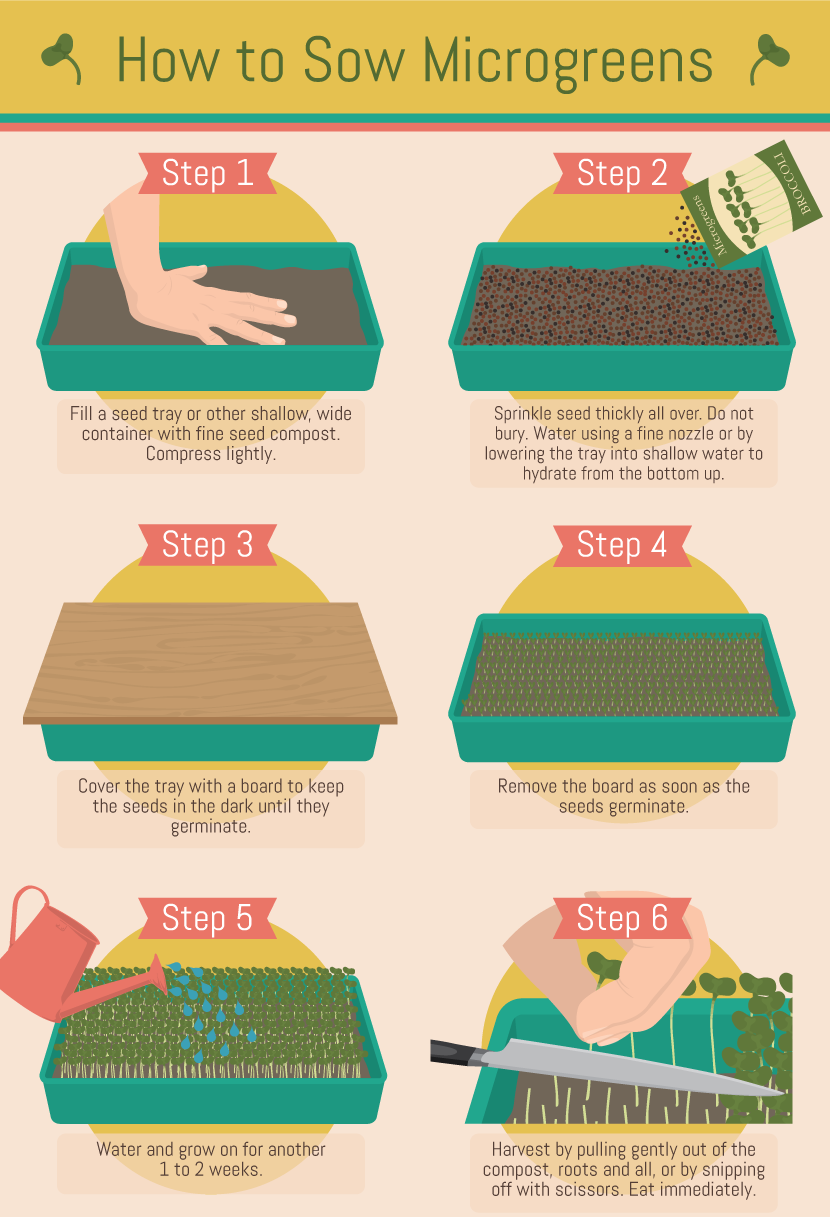
To sterilize your potting soil spread it into a baking tray between two and four inches thick cover it with aluminum foil and bake at a hundred and eighty degrees for forty five minutes. Poke in a thermometer to make sure the soil reaches a hundred and eighty but doesn't go over two hundred degrees fahrenheit.
It's best to sow one species per flat for even growth.
Seed densely but not so dense that the plants get leggy. Getting the right seeding density takes some practice. You can either seed diffusely or in rows.

After seeding, you can cover the seeds with a little bit of soil or unbleached paper towels or a cotton kitchen towel. After covering the flat you want to spray either the towel or the paper towel or the soil with a little bit of water.
Set them in a sheltered place with the temperature of about 60 to 70 degrees fahrenheit.
You're going to be ready to harvest in one to three weeks .Keep your trays moist and most of the greens won't need any fertilizer but some of the slow-growing greens like carrots and celery could use a little bit of help with some liquid fish emulsion and that's at half the dilution rate.
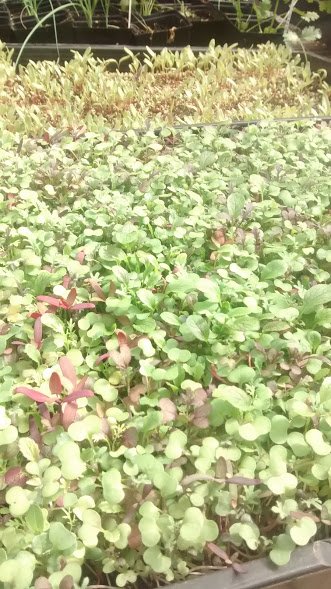
You can harvest micro greens when the first true leaves appear and when they're about two inches tall harvest in the morning on the day you plan to use them.
They can be harvested easily with scissors. If your micro greens are indoors, it's easy to snip them as you need them. If you grew them on a baby blanket you can just lift the baby blanket out and turn it upside down and then snip off the greens. This method is used most often by commercial farmers
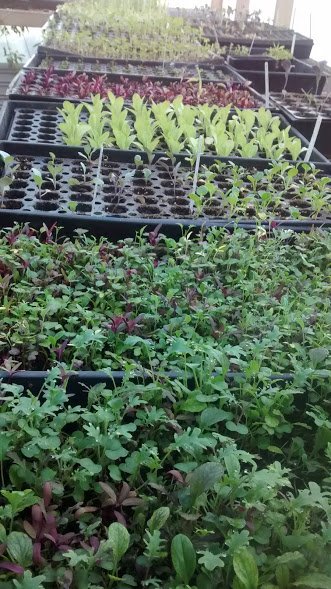
Just wash the micro greens gently and then you can enjoy them on soups, salads, sandwiches and virtually anything.
Another great thing to do with your microgreens is to juice them.
Microgreens are a very profitable crop to grow and unlike growing baby greens and sprouts, there are fewer regulation involved in growing them for market.
Here in the Seattle area they wholesale for about $50-60 per pound. That's about 2.5 to 3 flats of microgreens.
Seeing how they grow very fast (10-14 day from seed to harvest) and require very little space and no nutrients, microgreens can be a money maker for farmers in a city with lots of good chefs in it.
This video from will explain more about growing microgreens for profit for those of you interested in learning more and it gives some good tips for growing for yourself as well.
Interviews & Insights: Chris Thoreau - Commercial Microgreens Operation

Health Benefits Of Microgreens
There has been a lot of study done on mircogreens and most of it has concluded that newly sprouted edible plants are packed with concentrated nutrients, minerals and vitamins.
It makes sense when you consider that a young plant needs all the help it can get to initially spring to life in those first moments of germination, before it grows it's first true set of leaves.
Until then, a plant needs no fertilization and gets all it needs from the seed itself. Eating a sprout is ingesting the purest form of life energy and that has to be good for you.
Researchers found microgreens like red cabbage, cilantro, and radish contain up to 40 times higher levels of vital nutrients than their mature counterparts.
“The microgreens were four- to 40-fold more concentrated with nutrients than their mature counterparts,” says researcher Qin Wang, PhD, assistant professor at the University of Maryland in College Park. “When we first got the results we had to rush to double and triple check them.”
For example, red cabbage microgreens had 40 times more vitamin E and six times more vitamin C than mature red cabbage. Cilantro microgreens had three times more beta-carotene than mature cilantro. credit
Microgreens can be used on just about anything you can imagine and chefs love the variety of colors, flavors and textures then come in, allowing them to really get creative with their presentations.
My all time favorite uses for microgreens are sandwiches, pizza and soup garnishes.
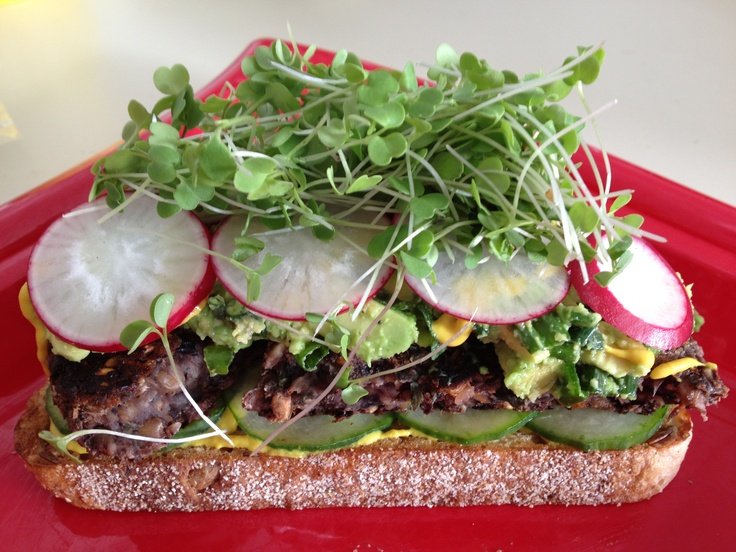
Microgreens are a great way to get some extra nutrition through the winter months so sow some microgreens and grow nature's own super-food. So grow some nutrition and grow organic for life.
All images are mine unless otherwise noted and credited.
Related Posts
How To Grow Lettuce For Your Home And Market --- by @luzcypher
How To Grow Cucumbers And Make Dill Pickles --- by @luzcypher
How To Grow Carrots --- by @luzcypher
How To Grow Onions, Leeks And Shallots --- by @luzcypher

